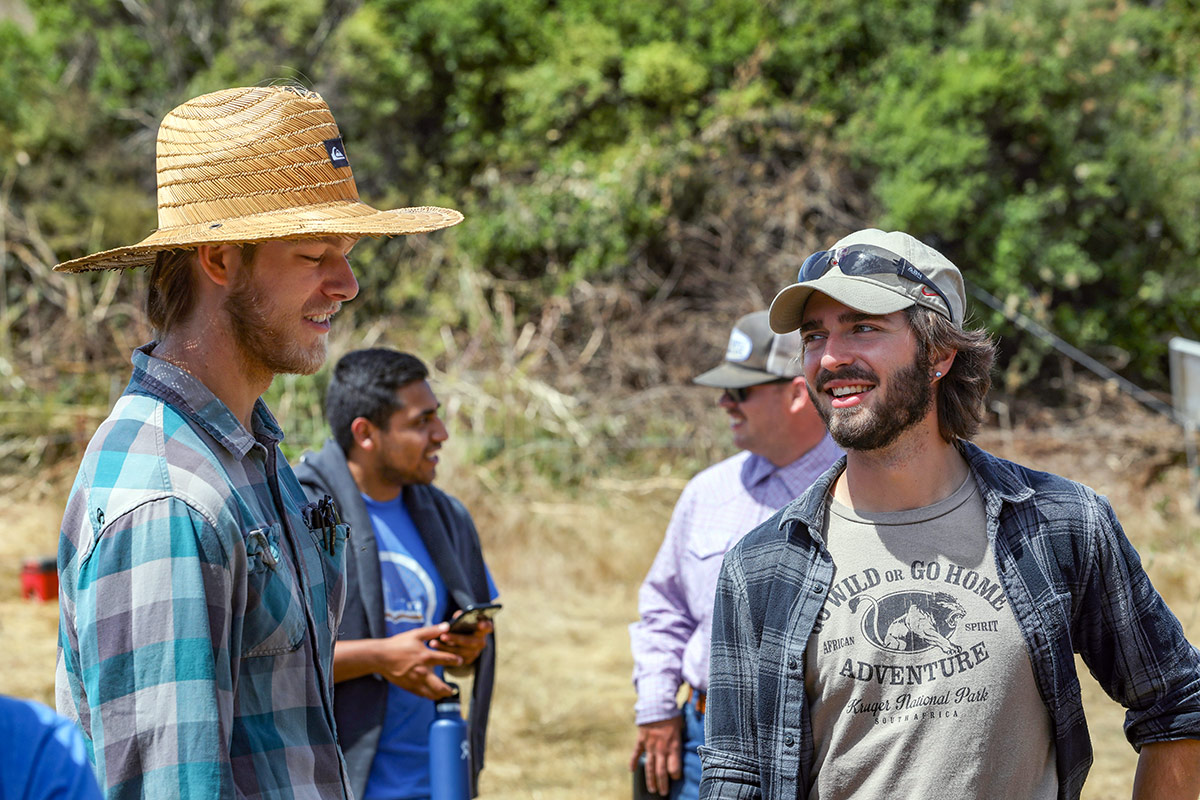To Gonzales-Kramer, it was essential to understand what this work looks like on the ground, beyond the theoretical discussion of solutions.
Where are they now? Leif Gonzalez-Kramer

Gonzales-Kramer, former TomKat Ranch intern, and now CEO of Working Trees
03/20/2025
By: Isabel Toldi
Growing up in an agricultural community in rural Iowa, Leif Gonzales-Kramer has long been aware of the negative consequences that come with large-scale food production. While pursuing an education at Stanford University, Gonzales-Kramer sought to find a way to advance sustainable agriculture and chanced upon TomKat Ranch through Stanford’s TomKat Center for Sustainable Energy in 2018. According to Gonzales-Kramer, “an internship at TomKat Ranch allowed me to get my hands dirty and experience what it would actually take to produce food in a socially and environmentally responsible way.” To Gonzales-Kramer, it was essential to understand what this work looks like on the ground, beyond the theoretical discussion of solutions.
While interning at TomKat Ranch, Gonzales-Kramer spent a significant amount of time learning to manage cattle. He began each morning by checking the livestock. According to Gonzales-Kramer, “Everyday I was out on the land, which was something I really enjoyed and loved about the internship program.” In addition to managing cattle, he also conducted environmental surveys with Point Blue, assisted in the garden, and developed a project proposal to implement sheep and goats. Gonzales-Kramer also gathered observations about the regenerative potential of trees that would ultimately inform his future work: “It would be the middle of the summer, everything would be dried out, and the only green grass in the field would be under these pine trees. They would capture the fog and the mist, drip down through the branches and water the grass beneath.”
Gonzales-Kramer’s time at TomKat Ranch was one of many experiences that led him to become CEO of Working Trees, a company that integrates and scales agroforestry in agricultural landscapes using carbon markets. TomKat Ranch’s practices inspired him to implement silvopasture — a system that integrates trees and livestock on the same land — across Brazil and the U.S. Through a process called insetting, Working Trees works with corporations in the beef industry (such as Burger King, McDonald’s, and Costco) to deploy silvopasture projects in their supply chains in order to offset emissions.

Leif Gonzalez-Kramer with fellow interns in 2020 at TomKat Ranch
Working Trees aims to plant a million acres of silvopasture per year and is working to expand within the U.S., specifically Maryland and Virginia. According to Gonzales-Kramer, “We focus on silvopasture because of the scale of opportunity that is available.” With agriculture accounting for about 7% of global carbon emissions, Gonzales-Kramer and Working Trees see the implementation of silvopasture as an approach that can have a measurable, positive impact on climate change while providing innovation to the beef industry.
In practice, the day-to-day of Working Trees involves meeting with farmers, understanding their goals and priorities for their farm, and helping them find ways to use silvopasture to achieve those goals. A large part of Gonzales-Kramer’s mindset was learned during his internship at TomKat Ranch, where he had the opportunity to visit other ranches in the area. Through his exposure to different ways of managing land and animals, he was able to understand the complexity that exists on the ground and the distinct uniqueness of each production. “If you’ve been to one farm, then you’ve been to [only] one farm,” says Gonzales Kramer. This understanding is vital to his work at Working Trees. “We have to try to empathize with each farmer to figure out how to frame our offering, be as compelling as possible, and to build as much coalition as possible.”
To Gonzales-Kramer, the future of agriculture looks bright. “Over the past years, we’ve seen that corporations are taking a hard, critical look at their supply chains and just how disconnected, disjointed, and at risk they are, especially in the face of climate change,” he says. However, Gonzales-Kramer also believes that for this to be truly possible, the system has to work in favor of the farmers through “incentives and payments that recognize the true cost of producing food in a sustainable way.” For anyone looking to be involved in agriculture, particularly regenerative agriculture, Gonzales-Kramer has two suggestions. “First, follow your passion. Second, get your hands dirty and learn what it’s like to produce food in a regenerative way.”